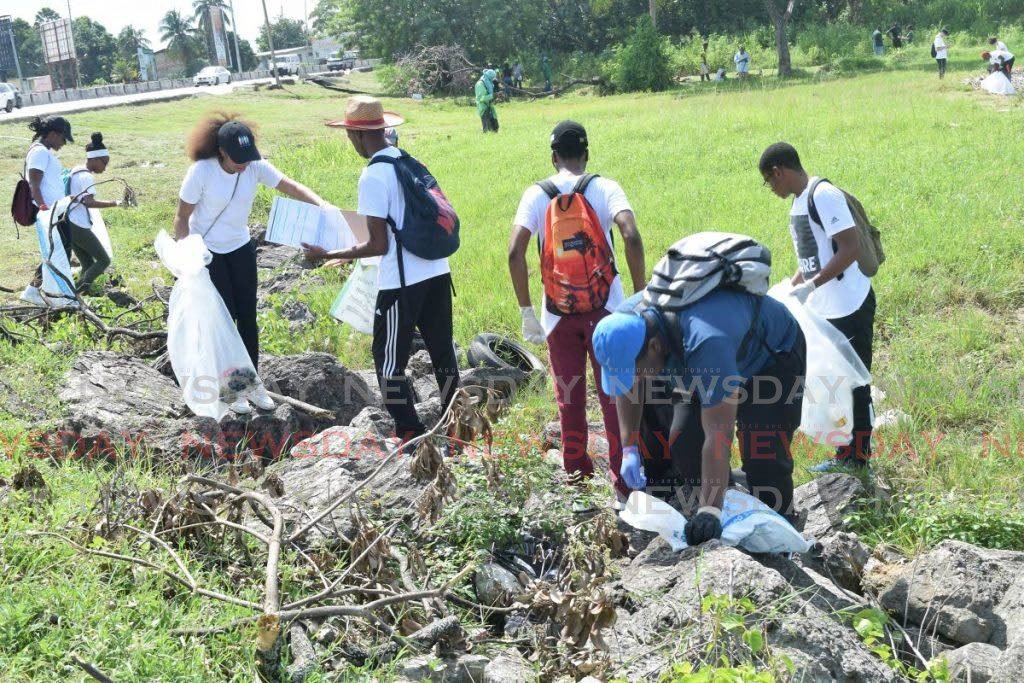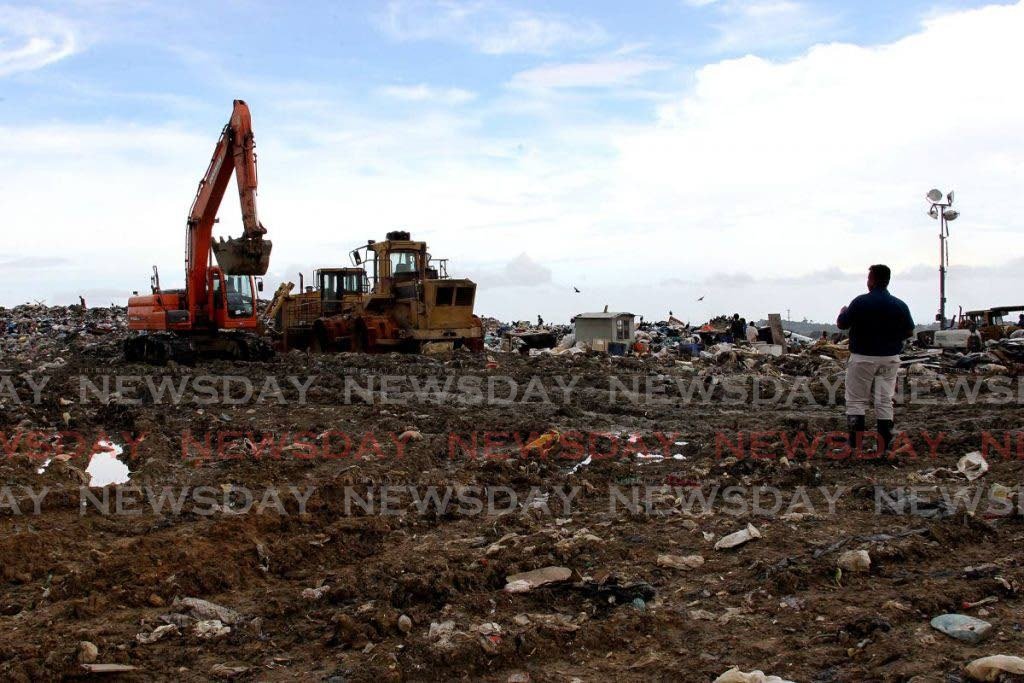60,000 plastic elephants roaming landfills

AKILAH STEWART
IN 2010, a report estimated that 700,000 tonnes of waste was deposited into TT’s landfills annually.
However, the Solid Waste Management Company (SWMCOL) has estimated that in excess of 700 tonnes of waste materials was processed between 2014 and 2019.
By comparison, the United States Environmental Protection Agency says as much as 75 per cent of waste can be recycled.
However, America recycles approximately 30 per cent of its waste.
With that in mind, our current recycling drive is in a race against the clock. The Ministry of Planning and Development, currently under the Environmental Management Agency, has projected that by 2020, TT will be generating 1.4 million tonnes of municipal solid waste each year.
Are we serious about waste management, or are we trying to sweep up what is becoming a tsunami of waste with a broom and dustpan?
Using 2020 projections, almost 300,000 tonnes of our waste is derived from plastic. What does that look like?
A mid-range weight for an African elephant is five tonnes, so that’s 60,000 plastic “elephants” roaming our landfills each year.
The combined waste generated in TT yearly could weigh as much as all the African elephants alive at present.

A considerable amount of waste in the oceans is plastics. Approximately half of these plastics are used only once.
While these man-made materials are important for their durability, convenience, hygienic element and low cost, plastics have numerous adverse effects on the environment.
According to scientific estimates, they take a long time to fully break down – on average, 450 years. Other materials that contain plastic can take even longer: Styrofoam 500 years; fishing lines 600 years; sanitary pads and disposable diapers, 400-800 years.
Plastics were designed to last long and do not readily decompose like wood and other natural, organic materials. They could be around for the next 15-20 generations.
This is because while plastics disintegrate, the small fragments (microplastics), take a long time to fully erode. They also disintegrate more slowly in cool environments, like soil.
Manufacturing industries have made some attempts to address these problems, but are they true solutions?
For instance, people often note, “But my plastic shopping bag crumbles into dust.”
It is true that some plastic bags are made to be “100 per cent degradable.” However, this “dust” is not the same as a decomposed banana peel or tree cutting; it is still plastic that can choke and poison animals. A pile of this plastic “dust” is not suitable for a compost; it is largely synthetic material.
On the other hand, some plastics are “100 per cent biodegradable” – but can leave chemical residues whose effects are either toxic or not fully known. Additionally, “compostable” plastics need to be commercially composted, as they are not designed to break down in your backyard compost naturally.
Before all these “new” types of plastic made from plant materials and all green-sounding things break down, a lot of environmental damage can be done.
Another problem with plastics is that a number of them are composed of numerous toxins that are released when they are exposed to various environmental conditions, such as sunlight. Even in landfills, they can slowly release toxic leachate that can contaminate the soil as well as surface and groundwater resources.

Additionally, there are sometimes fires in local landfills. When these plastics burn, they contribute to air pollution. Air, water and soil pollution can have a range of direct and indirect effects on humans, such as eye, throat and lung irritation, aggravation of asthma, and cancer.
This is our challenge: waste that does not degrade in our lifetime.
The waste issue is a complex one and there is no simple solution, no singular approach to addressing it; but everyone can do something small.
Sidebar
Eight things you can do
Talk with your family, friends or colleagues about how you can be more efficient in your personal waste generation.
Spend ten minutes doing a waste audit of the coming week to consider how you can reduce your use of materials that have long-term impacts on the environment.
Buy in bulk to reduce waste from packaging.
Research recycling activities in your community and encourage recycling.
Choose one type of single-use plastic to stop using, for example, straws.
Try more home-made and locally made foods and invest time in your kitchen garden
Learn about upcycling and try it
Use metal utensils for your fast-food purchases
This is the final story in a series of three by Akilah Stewart. She is a PhD candidate in environmental biology in the Department of Life Sciences, Faculty of Science and Technology, UWI, St Augustine. She has worked in the area of water resources management throughout the Caribbean over the past ten years.
Stewart's previous peace, Supermarket Seas, contained an error in the approximate percentage of local waste that is illegally dumped instead of being taken to landfills. The figure should have been 40 per cent. Our aplogies for the mistake.


Comments
"60,000 plastic elephants roaming landfills"